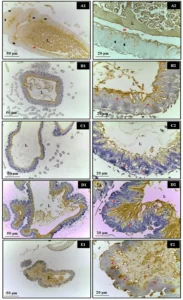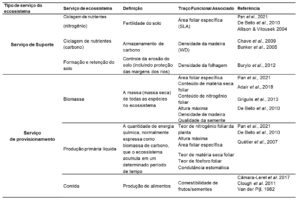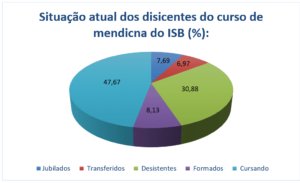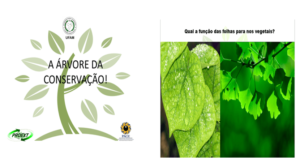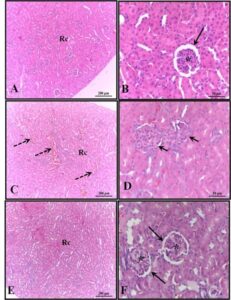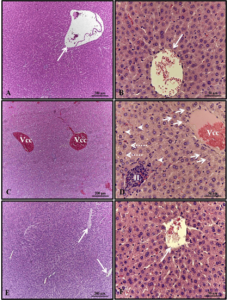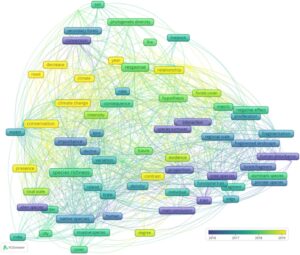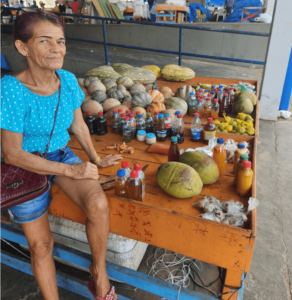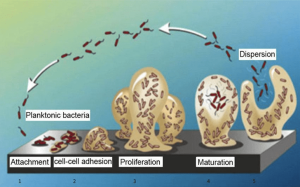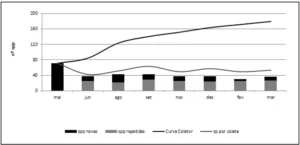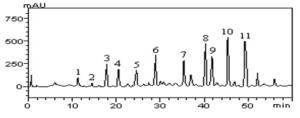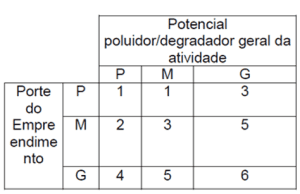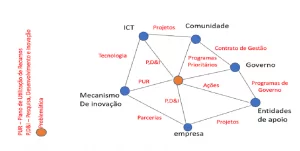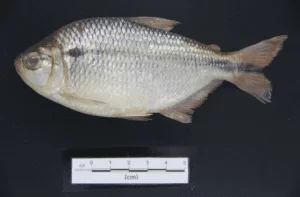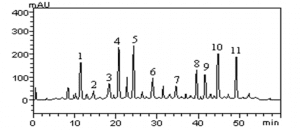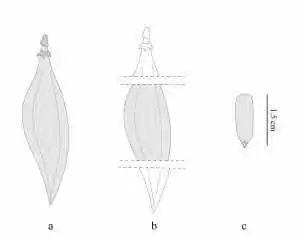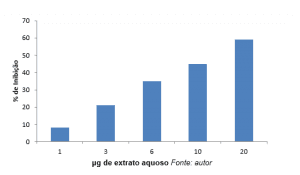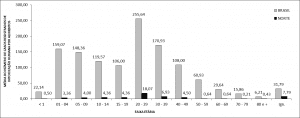INTEGRATIVE REVIEW
MALOSSO, Milena Gaion [1], PEREIRA, Lorrane Vitória da Rocha [2], SANTOS, Ivan Monteiro dos [3], SOUZA, Erick Martins e [4], BARBOSA, Edilson Pinto [5], FURTADO, Maria Aparecida Silva [6]
MALOSSO, Milena Gaion. et al. Types of Herbal Therapeutic Approaches: A Literature Review. Revista Científica Multidisciplinar Núcleo do Conhecimento. Year 08, Ed. 09, Vol. 03, pp. 05-25. September 2023. ISSN: 2448-0959, Access Link: https://www.nucleodoconhecimento.com.br/biology/herbal-therapeutic-approaches, DOI: 10.32749/nucleodoconhecimento.com.br/biology/herbal-therapeutic-approaches
ABSTRACT
Phytotherapy is a therapeutic practice based on plant-based preparations aimed at treating diseases. Professionals from various fields of expertise draw on both traditional and scientific knowledge to formulate various types of plant-based preparations for this purpose. As phytotherapy has transitioned from being considered solely a traditional knowledge-based practice to becoming a highly relevant topic with scientifically recognized merit, it has become an increasingly common practice among healthcare professionals. This is due to its tendency to cause fewer side effects than conventional allopathic medications, leading to increased usage in contemporary societies, justifying the need for this study. Given its historical significance and resurgence in the modern market of plant-based medicines, the objective of this study was to conduct a literature review on phytotherapy. Therefore, this study sought to answer the following question: What are the main current approaches to phytotherapy? To address this question, a literature review was performed based on texts obtained from Google Scholar, primarily focusing on topics such as the history of phytotherapy, types and approaches to phytotherapy, the regulation of herbal medicines in Brazil, and medicinal, nutritional, and integrative phytotherapy, which formed the basis of the sections in this article. As a result, it is evident how rich this therapeutic practice is and how important the use of herbal medicines is, as they can be associated with traditional medicine, primarily because they can cause fewer side effects than conventional allopathic medications.
Keywords: History of Phytotherapy, Types and Approaches to Phytotherapy, Regulation of Herbal Medicines in Brazil, Medicinal, Nutritional, and Integrative Phytotherapy.
1. INTRODUCTION
According to the Aurélio dictionary, “phytotherapy is a therapeutic practice that uses medicinal plants and their derivatives to promote health and treat diseases” (FERREIRA, 2010). Medicinal plants, in turn, “are those that have one or more organs containing substances used for therapeutic purposes or that serve as a starting point for the synthesis of chemical and pharmaceutical products, known as active ingredients” (CARVALHO et al., 2010). Also known as herbal medicine or botanical medicine, phytotherapy has been practiced for thousands of years in various cultures around the world (FLORIANO, 2016).
Phytotherapy is based on the use of different parts of plants, such as roots, leaves, barks, flowers, and seeds, which contain natural chemical compounds with therapeutic properties (OLIVEIRA, 2011). These compounds can have pharmacological effects on the human body, such as anti-inflammatory, analgesic, antimicrobial, among others (MOREIRA, 2020).
Phytotherapists, professionals specialized in phytotherapy, use traditional and scientific knowledge to select and combine medicinal plants according to the needs and conditions of each individual (ABRANCHES, 2012; ROJAS and MALOSSO, 2022). They may recommend the use of teas, infusions, extracts, ointments, capsules, or other forms of herbal preparations (MACEDO, 2016; MALOSSO; ALVES; SANTOS, 2023).
It is important to note that, although medicinal plants are of natural origin, they may also contain active substances that can interact with conventional medications or cause unwanted side effects (LIMA, 2021). Therefore, as stated by Bezerra, Da Costa, and Guzén (2021), it is essential to seek guidance from qualified professionals before using any medicinal plant for the treatment of diseases since phytotherapy does not replace conventional medical care but can be used as a complementary therapy (FEITOSA et al., 2016).
The aim of this work was to conduct a literature review on phytotherapy, considering the rapidly growing use of herbal medicines in contemporary societies, indicating that this topic needs to be reanalyzed with a focus on current uses. To address this question, a literature review was conducted based on texts obtained from Google Scholar, primarily focusing on the topics of the history of phytotherapy, types and approaches to phytotherapy, regulation of herbal medicines in Brazil, and medicinal, nutritional, and integrative phytotherapy, which gave rise to the sections of this article. The inclusion criteria were scientific articles published in indexed journals or texts from thesis defenses, master’s dissertations, or doctoral theses related to the aforementioned topics. Those that were not published in the last 10 years were excluded, with the exception of classic texts and those written in a foreign language.
Based on the selected texts, which were used to develop this work, the following themes stood out: History of Phytotherapy, Approaches to Phytotherapy, Regulation of Herbal Medicines in Brazil, and Types of Phytotherapy, namely Medicinal Phytotherapy, Nutritional Phytotherapy, and Integrative Phytotherapy.
These themes, therefore, constitute a delineation of the state of the art of phytotherapy, as well as guidelines for the textual sequence that will now be developed.
2. HISTORY OF PHYTOTHERAPY
Phytotherapy, as a therapeutic practice, has its origins in ancient times when people began to observe the use of medicinal plants to treat diseases and alleviate symptoms (MAIA, 2015). Floriano (2016) recalls that “knowledge about the medicinal properties of plants was passed down through generations through oral traditions and empirical practices (MALOSSO; BARBOSA; SANTOS, 2023).”
Ancient civilizations in different parts of the world developed complex medical systems that incorporated the use of medicinal plants (SANTOS, 2000). In Mesopotamia, for example, the Sumerians and Babylonians already used plants to treat various health conditions (VIEIRA, 2012). In India, Ayurvedic medicine emerged, a holistic system of medicine that includes the use of herbs, minerals, and specific therapeutic techniques (RODRIGUES, 2018).
In ancient Greece, Hippocrates, considered the father of Western medicine, emphasized the use of medicinal plants in his treatments (KAISERMANN; PAWLOWSKI; MENDEL, 1957). His writings, such as the Corpus Hippocraticum, detailed the use of various plants to treat different diseases (CAIRUS, 1999).
In China, traditional Chinese medicine also has a long history of using medicinal plants. The earliest written record of Chinese medicine, the Huangdi Neijing (Yellow Emperor’s Inner Canon), dated to approximately 200 B.C., contains information about the use of plants and herbs for treatments (BUENO, 2022).
During the Middle Ages, phytotherapy continued to be practiced and deepened by monks and herbalists in European monasteries. They cultivated gardens of medicinal plants, studied their properties, and developed techniques for preparing herbal remedies (TOMAZZONI; NEGRELLE; CENTA, 2006).
With the emergence of modern chemistry and pharmacology in the 19th century, there was a gradual shift away from the use of medicinal plants in favor of synthetic drugs because scientific research focused on the discovery and development of chemical compounds for treating diseases (CASTRO, 2021).
However, from the late 20th century onwards, there was a resurgence of interest in phytotherapy and the use of plant-based medicines. This was due to various reasons, including growing concerns about the side effects of synthetic drugs, the search for more natural approaches to healthcare, and the appreciation of traditional knowledge (ROCHA et al., 2021).
Today, phytotherapy is practiced worldwide, with different practical approaches according to each culture (CASTRO, 2022). In many countries, phytotherapy is recognized and integrated into conventional healthcare systems (IABMOTO, 2022). Scientific research continues to explore the effectiveness, safety, and mechanisms of action of medicinal plants, seeking to validate their traditional uses and develop new herbal medicines (ALMEIDA, 2011).
It is important to note that the regulation of phytotherapy varies from country to country. Some places have robust regulatory systems to ensure the quality, safety, and effectiveness of herbal products, while others may have less stringent regulations or no specific regulations (AMARAL, 2017; PERFEITO, 2012). Therefore, it is essential to seek guidance from qualified professionals and use herbal products from reliable sources.
3. PHYTOTHERAPY APPROACHES
There are different approaches and types of phytotherapy, with the first being traditional phytotherapy, also known as plant-based traditional medicine. This is the oldest form of phytotherapy, based on knowledge passed down through generations (FERREIRA; BATISTA; PASA, 2015). It is practiced in various cultures around the world and uses medicinal plants according to the traditional principles and practices of each medical system, such as Ayurvedic medicine, traditional Chinese medicine, and indigenous medicine (MATSUCHITA and MATSUCHITA, 2015).
Modern phytotherapy is an approach that combines traditional wisdom with current scientific knowledge (AMERICANO, 2015). It involves the use of medicinal plants based on scientific evidence, clinical research, and pharmacological studies (ANTÔNIO; TESSER; MORETI-PIRES, 2015). Modern phytotherapy seeks to validate the therapeutic properties of plants, identify their active components, and develop standardized formulations to ensure the quality and effectiveness of phytotherapeutic products (SANTOS et al., 2016).
According to Oliveira (2013), Western phytotherapy refers to the use of medicinal plants from the Western flora, including Europe, the Americas, and other Western regions of the world, incorporating the traditional knowledge of these regions but also relying on scientific research. It is applied to treat a wide range of health conditions, following the practices and principles of Western herbal medicine (RODRIGUES; MOURÃO; LOPES, 2020).
On the other hand, Oriental phytotherapy is the form of phytotherapy based on traditional medical systems of East Asian countries, such as traditional Chinese medicine, traditional Japanese medicine, and traditional Korean medicine (GRAÇO, 2020). According to Oliveira (2016), it uses medicinal plants based on the principles of Chinese medicine, such as meridian theory, Yin-Yang balance, and the theory of the five elements, aiming to restore balance and harmony in the body.
Ayurvedic phytotherapy, originating in India, is a holistic system that uses medicinal plants, along with diet, lifestyle, massage, and other practices, to treat diseases and promote health (DORNELLES, 2022). It classifies plants based on their properties, flavors, and effects on Doshas[7] (vata, pitta, and kapha) and uses specific plant combinations to restore balance in the Doshas (SIQUEIRA, 2020).
Homeopathic Phytotherapy is an alternative medical system that uses natural substances, including medicinal plants (CORRÊA; SOARES; MUCCILLO-BAISCH, 2018), in extremely diluted doses and is based on the principle of the “law of similars,” where a substance that causes symptoms in a healthy person can be used to treat the same symptoms in a sick person (LOCH-NECKEL; CARMIGNAN; CREPALDI, 2010). According to the latter author, medicinal plants are diluted and vigorously shaken to stimulate the healing response.
As demonstrated, there are various approaches to phytotherapy, with the common foundation being the knowledge of using medicinal plants, which is transmitted from generation to generation according to their culture around the world, their principles, and traditional practices of each medical system.
Next, we will discuss how herbal medicines have been regulated in Brazil.
4. REGULATION OF PHYTOTHERAPY IN BRAZIL
In Brazil, the legal regulation of herbal medicines is carried out by the National Health Surveillance Agency (ANVISA), which is responsible for establishing the rules and guidelines for the production, registration, marketing, and use of these products (CARVALHO et al., 2012). The regulation aims to ensure the quality, safety, and effectiveness of herbal medicines available on the market (RODRIGUES, 2018).
The Collegiate Board of Directors Resolution (RDC) No. 26/2014 is the main regulation for herbal medicines in Brazil (BRASIL, 2014). This resolution establishes the technical requirements and guidelines for the registration, labeling, production, quality control, and advertising of these products.
According to the aforementioned regulation, for an herbal medicine to be marketed in Brazil, it is necessary to obtain registration with ANVISA, and this is only granted after the quality, safety, and efficacy of the product have been proven through clinical and non-clinical studies conducted in accordance with the agency’s requirements.
Furthermore, this regulation stipulates that herbal medicines must be produced from properly identified plant raw materials, ensuring the authenticity of the plant used. Criteria for production are also established, such as good manufacturing practices, quality control, proper storage, and traceability of inputs.
Regarding labeling, herbal medicines must contain mandatory information, such as the product’s name, its qualitative and quantitative composition, instructions for use, precautions, contraindications, possible adverse effects, and the registration number with ANVISA.
It is worth noting that, for the prescription and dispensing of herbal medicines, healthcare professionals must be duly qualified, such as doctors, pharmacists, and dentists (XAVIER and SOUZA, 2019).
Consumers are encouraged to seek herbal products registered with ANVISA, as this ensures they have been evaluated for quality, safety, and efficacy. Additionally, it is recommended to purchase them from reliable establishments such as pharmacies and drugstores.
The regulation of herbal medicines in Brazil aims to ensure that these products are used safely and effectively, thus promoting access to quality natural therapeutic options (MATSUCHITA and MATSUCHITA, 2015).
In the next section, we will address two types of herbal medicine use: medicinal phytotherapy and nutritional phytotherapy.
5. TYPES OF PHYTOTHERAPY
5.1 MEDICINAL PHYTOTHERAPY:
The use of phytotherapy for medicinal purposes is an ancient practice that involves the use of medicinal plants to prevent diseases (COSTA et al., 2019a). Plants contain a wide variety of chemical compounds, such as flavonoids, terpenoids, alkaloids, and tannins, among others, which can have therapeutic properties (SILVA et al., 2015).
Medicinal phytotherapy can be applied in various forms, such as through the preparation of teas and infusions, which is the most common form of use and involves extracting the active principles of plants through infusion in hot water (PAULERT et al., 2014). Infusions can be used to alleviate symptoms such as headaches, insomnia, gastrointestinal discomfort, among others (GARLET; MATTOS; MARTINS, 2017; SANTOS; SILVA; VASCONCELOS, 2021).
It is also used in the form of topical applications, through ointments, essential oils, or poultices made from medicinal plants (SOARES, 2022). According to this author, it helps treat skin conditions such as inflammation, burns, wounds, or infections.
Another form of herbal medicine is capsules and tablets, in which the active principles of plants are extracted and concentrated and then encapsulated or compressed for ease of administration (ABRANCHES, 2012). This form of use is commonly used to treat conditions such as anxiety, insomnia, digestive problems, among others (KANSLER, 2014).
Liquid herbal extracts are concentrated solutions of active principles from plants, usually obtained through solvent extraction (CECHINEL FILHO and ZANCHETTE, 2020). According to these authors, this type of herbal medicine can be used to treat various conditions, such as respiratory diseases, circulatory problems, and nervous system disorders.
5.2 NUTRITIONAL PHYTOTHERAPY:
Nutritional phytotherapy, also known as phytonutrition, is an approach to phytotherapy that uses medicinal plants as a source of nutrients to promote health and prevent diseases (NAVOLAR; TESSER; AZEVEDO, 2012). By combining the therapeutic properties of plants with their nutritional components, the goal is to provide the body with bioactive substances that help maintain balance and well-being (ABREU, 2020).
Nutritional phytotherapy is based on the premise that proper nutrition is fundamental to health and the proper functioning of the body (PIRES, 2017). It emphasizes the use of natural foods rich in essential nutrients such as vitamins, minerals, antioxidants, phytochemicals, and fibers (MORAIS, 2021).
In this approach, medicinal plants are selected not only for their therapeutic properties but also for their nutritional composition (SANTOS, 2022). Some examples of plants used in nutritional phytotherapy include cruciferous vegetables such as broccoli, cauliflower, cabbage, and others in this family, known for their protective effects against cancer due to their sulfur compounds and antioxidants (SALVI and MAGNUS, 2014).
Citrus fruits like oranges, lemons, and grapes, among others, are also used in nutritional phytotherapy as sources of vitamin C, which strengthens the immune system and acts as an antioxidant (COSTA, 2019b).
Leafy green plants like spinach, kale, and arugula, among other green plants, are rich in vitamins, minerals, and antioxidants, providing essential nutrients for overall health (SOUZA, 2023).
Spices like garlic and onions contain sulfur compounds, such as allicin, which have antimicrobial, antioxidant, and anti-inflammatory properties, making them useful in the field of nutritional phytotherapy (FONSECA et al., 2014).
Turmeric is also noteworthy, containing curcumin, a powerful antioxidant and anti-inflammatory compound, often used in nutritional phytotherapy to support joint health, combat inflammation, and protect the cardiovascular system (RIBEIRO, 2020).
Finally, ginger, often used in the form of juices, possesses anti-inflammatory and digestive properties and is used in nutritional phytotherapy to relieve nausea, improve digestion, and promote circulation (CARUJO, 2022).
As noted, nutritional phytotherapy can be practiced in different ways, such as incorporating specific foods into the daily diet, preparing herbal teas and infusions, or using plant-based nutritional supplements.
6. INTEGRATIVE PHYTOTHERAPY:
In addition to the two types presented earlier, it is also worth highlighting integrative phytotherapy, an approach that combines the principles of phytotherapy, which uses medicinal plants for the treatment of diseases, as previously presented, with other health and well-being practices, in a holistic view of an individual’s health as a whole (SOLHA, 2015). This approach recognizes the importance of a holistic and integrative approach to health, considering not only the physical aspects but also the emotional, mental, and spiritual aspects of the individual (MENDONÇA et al., 2019).
According to SIMÕES et al., (2019), integrative phytotherapy seeks to use the knowledge and practices of phytotherapy in conjunction with other complementary therapies, such as nutrition, acupuncture, traditional Chinese medicine, aromatherapy, flower therapy, and physical exercise, among others.
This approach aims to promote health and prevent diseases, as well as assist in the treatment of specific conditions (ELDIN and DUNFORD, 2001). By integrating different therapies, a more comprehensive and personalized approach is sought, considering individual needs and seeking balance and well-being in various dimensions of life.
Integrative phytotherapy can be applied in various ways, depending on the individual’s needs and preferences. Some examples include individualized prescriptions based on an assessment of the individual’s health (STEWART et al., 2019). According to the same author, integrative healthcare professionals may recommend the use of specific medicinal plants, both in the form of teas, extracts, capsules, or ointments, and as part of a broader therapeutic plan.
According to Santos (2008), this approach also emphasizes the importance of a healthy lifestyle, including a balanced diet, regular physical exercise, stress management, adequate sleep, and healthy relationships. These aspects are considered fundamental to maintaining health and optimizing the effects of phytotherapy.
Integrative phytotherapy is typically practiced by qualified healthcare professionals, such as integrative physicians, naturopaths, herbalists, nutritionists, or complementary therapists, as only these professionals have the knowledge and experience to assess an individual’s health condition, consider their needs, and prescribe appropriate integrative treatments (CHOPRA, 2017).
Finally, it is important to note that integrative phytotherapy should not replace conventional medical treatment but can be used as a complementary approach. Effective communication and collaboration between the healthcare professionals involved are essential to ensure the safety and effectiveness of integrative treatment.
7. CONCLUSION
Having discussed the history of phytotherapy, its approaches, the regulation of phytotherapies in Brazil, and the distinction between medicinal, nutritional, and integrative phytotherapy, the objective of presenting a literature review on phytotherapy has been fulfilled to understand its state of the art.
As evidenced, phytotherapies can be used for three purposes: medicinal phytotherapy, nutritional phytotherapy, and integrative phytotherapy.
Therefore, it is important to highlight that the use of medicinal phytotherapy requires adequate and responsible knowledge. It is recommended to seek guidance from qualified healthcare professionals such as doctors or herbalists who can assess an individual’s health condition, consider possible drug interactions, and recommend suitable plants and formulations. Additionally, ensuring the quality and source of the plants used is essential. Opt for products registered with ANVISA and acquire them from reputable establishments such as pharmacies and drugstores. This is crucial to ensure the safety and effectiveness of the treatment.
As expressed, medicinal phytotherapy can be a complementary or alternative therapeutic option, but it is essential to use it consciously, taking into account each person’s individuality and always seeking a balance between the benefits and risks involved.
Regarding nutritional phytotherapy, it can be practiced in different ways, such as incorporating specific foods into the daily diet, preparing herbal teas and infusions, or using herbal-based nutritional supplements. The most important thing to emphasize is that nutritional phytotherapy should be practiced under the guidance of professionals such as nutritionists or herbalists, who can assess individual needs and recommend the most suitable plants and foods for each person. Furthermore, ensuring the quality of plants and products used is indispensable, opting for reliable and organic sources whenever possible.
Integrative phytotherapy, finally, is the type that combines the principles of phytotherapy with other complementary therapies, seeking an integrated holistic approach to health, aiming to prevent diseases and assist in the treatment of specific conditions, considering individual needs, and promoting balance and well-being in various dimensions of life. It should always be carried out by qualified professionals.
All of this reveals the richness in the therapeutic practice of using phytotherapies, as they may cause fewer side effects than conventional allopathic medications, and therefore, they can be associated with traditional medicine.
REFERENCES
ABRANCHES, Monise Viana. Plantas Medicinais e Fitoterápicos: abordagem teórica com ênfase em nutrição. 1ª Edição. A. S. SISTEMAS: Viçosa/MG, 2012.
ABREU, Erick Nivaldo de Sá. Uso de aditivos naturais na nutrição animal. Trabalho de Conclusão de Curso de Bacharelado em Zootecnia da Pontifícia Universidade Católica de Goiás, 51 p., 2020.
ALMEIDA, Mara Zélia de. Plantas Medicinais. 3ª Edição. Salvador: EDUFBA. 221 p., 2011.
AMARAL, Ana Catarina Osório de Esteves. Produtos de Saúde a Base de Plantas: contexto regulamentar em Portugal e na Europa. Dissertação de Mestrado Integrado Ciências Farmacêuticas. Universidade de Lisboa. 47 p. 2017.
AMERICANO, Tulio. Fitoterapia brasileira: uma abordagem energética. 1ª Edição. Brasília: Cidade Gráfica Editora. 2015, 420 p.
ANTÔNIO, Gisele Damian; TESSER, Charles Dalcanale; MORETI-PIRES, Rodrigo Otávio. Contribuições das plantas medicinais para o cuidado e a promoção da saúde na atenção primária. INTERFACE Comunição, Saúde e Educação. v. 17, n. 46, p. 615 – 633, 2015.
BEZERRA, Elidiany de Santiago; DA COSTA, Guilherme Oliveira; GUZÉN, Fausto Pierdoná. Uso de plantas medicinais e fitoterápicos como terapia alternativa no tratamento de distúrbios emocionais: uma revisão narrativa de literatura. Trabalho de Conclusão de Curso de Bacharelado em Farmácia. Universidade de Potiguar. 31 p. 2021.
BRASIL, Ministério da Saúde, Agência Nacional de Vigilância Sanitária. Resolução RDC Nº 26, de 13 de maio de 2014, que dispõe sobre o registro de medicamentos fitoterápicos e o registro e a notificação de produtos tradicionais fitoterápicos. 2014. Disponível em: <www.gov.br>. Acesso em: 17 jul. 2023.
BUENO, André. História da China Antiga. Rio de Janeiro: Editora UERJ, 110 p. 2022.
CAIRUS, Henrique. Da natureza do homem Corpus hippocarticum. História da Ciência da Saúde, v. 6, n. 2, 1999.
CARUJO, Carlos Araújo. Rejuvelhescer: triunfo da biologia sobre a cronologia. 1ª Edição. Belém: Shamballah, 2022.
CARVALHO, Ana Cecília B. et al. Regulação Brasileira em Plantas Medicinais e Fitoterápicos. Revista Fitos, v. 7. n. 1, p. 05 – 16, 2012.
CARVALHO, Luciana Marques; COSTA, Jennifer Anne Martins da; CARNELOSSI, Marcelo Augusto Gutierrez. Qualidade em Planas Medicinais. 1 Edição. Aracaju: EMBRAPA Tabuleiros Costeiros. 56 p., 2010. Disponível em: <embrapa.br>. Acesso em 30 ago. 2023.
CASTRO, Marta Rocha. A importância dos saberes tradicionais e científicos para as práticas do cuidado em fitoterapia no SUS. Tese de doutorado em Geografia da Pontifícia Universidade Católica do Rio de Janeiro. 138 p. 2021.
CASTRO, Marta Rocha. A contribuição do uso das plantas medicinais na autonomia dos cuidados com a saúde. ASKLEPION Informaçõs em Saúde, v. 2, n. 1, p. 160 – 171, 2022. Disponível em: <https://revistaasklepion.emnuvens.com.br/asklepion/article/view/46>. Acesso em: 13 jun. 2023.
CECHINEL FILHO, Valdir; ZANCHETT, Camile Secconi Sechinel. Fitoterapia avançada: uma abordagem química, biológica e nutricional. 1º Edição. Porto Alegre: Artmed. 2020.
CHOPRA, Deepak. Saúde Perfeita. 1ª Edição. Florianópolis: Lua de Papel. 448 p, 2017.
CORRÊA, Natalia; SOARES, Maria Cristina Flores; MUCCILLO-BAISCH, Ana Luíza. Conhecimento do tema plantas medicinais e fitoteráoicos como instrumento tecnológico na formação dos acadêmicos de enfermagem. Vittalle – Revista de Ciências da Saúde, v. 30, n. 2, p. 38 – 46, 2018.
COSTA, Igor de Moura et al. Uso de plantas medicinais e fitoterápicos na atenção primária à saúde: uma revisão integrativa. Revista Eletrônica Acervo e Saúde, v. 26, p. 2 – 8, 2019a. Disponível em: <acervomais.com.br>. Acesso em: 17 jul. 2023.
COSTA, Eronita de Aquino. Plantas Medicinais. 1ª Edição. Petrópolis/RJ: Editora Vozes LTDA. 2019b.
DORNELLES, Mônica Nasser. Ayurveda no Brasil: os primeiros registros na imprensa (1987 – 1999). Dissertação de Mestrado em História. Universidade Federal de Integração Latino-Americana. 141 p. 2022.
ELDIN, Sue; DUNFORD, Andrew. Fitoterapia na atenção primária à saúde. 1ª Edição. Barueri/SP: Editora Manole. 2001. Disponível em: <https://www.google.com.br/books/edition/Fitoterapia/s3PFkaXTUfcC?hl=pt-BR&gbpv=1&dq=fitoterapia+integrativa+tem+como+objetivo+promover+a+sa%C3%BAde+e+prevenir+doen%C3%A7as,+al%C3%A9m+de+auxiliar+no+tratamento+de+condi%C3%A7%C3%B5es+espec%C3%ADficas.&printsec=frontcover>. Acessado em: 20 jul. 2023.
FEITOSA, Maria Helena Alves et al. Inserção do conteúdo fitoterapia em cursos da área de saúde. Revisa Brasileira de Educação Médica, v. 40, n. 2, p. 197 – 203, 2016.
FERREIRA, André Luís de Souza; BATISTA, Caio Augusto dos Santos; PASA, Maria Corete. Uso de plantas medicinais na comunidade quilombola Mata Cavalo em Nossa Senhora do Livramento – MT, Brasil. Biodiversidade, v. 14, n. 1, p. 151 – 160, 2015.
FERREIRA, Aurélio Buarque de Holanda. Novo Aurélio Século XXI: o dicionário da língua portuguesa. 3ª Edição. Totalmente revisado e ampliado. Rio de Janeiro: Nova Fronteira, 2272 p., 2010.
FLORIANO, Eliane Anastácio. Identidade, memória e cultura no trato com plantas medicinais: um possível diálogo entre saberes. Tese de Doutorado em Ciências da Linguagem. Universidade do Sul de Santa Catarina. 180p. 2016. Disponível em: <animaeducacao.com.br>. Acesso em: 06 jun. 2023.
FONSECA, G. M. et al. Avaliação da atividade antimicrobiana do alho (Allium sativum Liliaceae) e de seu extrato aquoso. Revista. Brasileira de Plantas Medicinais, v.16, n.3, supl. I, p. 679-684, 2014.
GARLET, Tanea Maria Bisognin; MATTOS, Jéssica Patrícia Oliveira de; MARTINS, Monik Compagnoni (Org.). Plantas medicinais de emprego popular em Palmeiras das Missões – RS. 2º Edição. Santa Maria: Pró-Reitoria de Extensão UFSM. 2017, 46 p.
GRAÇO, Catarina Baptista. Plantas medicinais com acção no aparelho respiratório: asma. Dissertação de Mestrado Integrado em Ciências Farmacêuticas. Universidade de Lisboa. 42 p. 2020. Disponível em: <http://hdl.handle.net;10451/52477>. Acesso em: 16 jun. 2023.
IABMOTO, Tchelsea Jully. Políticas farmacêuticas e práticas sociais em mudança: a institucionalização da Fitoterapia no Brasil, Espanha e Portugal. Trabalho de Conclusão de Curso de Farmácia e Bioquímica da Universidade Estadual Paulista, 32p. 2022. Disponível em: <http://hdl.handle.net/11449/238731>. Acesso em: 13 jun. 2023.
KAISERMANN, John; PAWLOWSKI, Milos; MENDEL, Yavor. História da Medicina. 1ª Edição. Cambridge Stanford Books. 1957.
KANSLER, Sandro. Plantas medicinais: viva mais e melhor. 1ª Edição. São Paulo: Blue Editora e Livraria LTDA. 2014.
LIMA, Luiz Joardan Fernandes. Plantas Medicinais utilizadas no tratamento de Diabetes mellitus: uma revisão de literatura. Trabalho de Conclusão de Curso de Bacharelado em Farmácia. Universidade Federal do Campina Grande. 58 p., 2021. Disponívele em: <http://dspace.sti.ufcg.edu.br:8080/jspui/handle/riufcg/21456>. Acesso em: 06 jun. 2023.
LOCH-NECKEL, Gecione; CARMIGNAN, Françoise; CREPALDI, Maria Aparecida. A homeopatia no SUS na perspectiva de estudantes da área de saúde. Revista Brasileira de Educação Médica. v. 34, n. 1, p. 82 – 90, 2010.
MACEDO, Jussara Alice Beleza. Plantas medicinais e fitoterápicos na atenção primária a saúde: contribuição para profissionais prescritores. Monografia de Especialização em Gestão da Inovação de Medicamentos da Biodiversidade na Modalidade EAD. FIOCRUZ/RJ, 58 p., 2016. Disponível em: <https://www.arca.fiocruz.br/handle;icict;17719>. Acesso em: 06 jun. 2023.
MAIA, Firmina Medeiros do Espírito Santo. Estudo do conhecimento da utilização das plantas medicinais pelos alunos e professores em duas escolas de Nova Aparecida, comunidade rural de Cabaceiras do Paraguaçu – BA. Trabalho de Conclusão de Curso de Licenciatura em Pedagogia. Faculdade Maria Milza. 51 p., 2015.
MALOSSO, Milena Gaion. ALVES, Akyla Anara Frota Lima. SANTOS, Ivan Monteiro dos. Feirinha de plantas medicinais: extensão universitária para utilização adequada de fitomedicamentos caseiros. Revista Científica Multidisciplinar Núcleo do Conhecimento, Ano. 08, Ed. 06, Vol. 05, pp. 28-41, 2023.
MALOSSO, Milena Gaion. BARBOSA, Edilson Pinto. SANTOS, Ivan Monteiro dos. Revisão bibliométrica do potencial econômico e uso de plantas medicinais no Brasil. Revista Científica Multidisciplinar Núcleo do Conhecimento, Ano. 08, Ed. 07, Vol. 03, pp. 114-133. 2023.
MATSUCHITA, Hugo Leonardo Pereira; MATSUCHITA, Ana Sílvia Pereira. A contextualização da fitoterapia na saúde pública. UNICIÊNCIAS, v. 19, n. 1, p. 86 – 92, 2015.
MENDONÇA, Maria Helena Magalhães et al. (ORG.). Atenção primária à saúde no Brasil: conceitos, práticas e pesquisa. 2ª Edição. Rio de Janeiro: FIOCRUZ. 2019.
MORAIS, Emídia Joyce Fernandes de. Potencial nutricional e tecnológico de plantas alimentícias não convencionais na Paraíba: uma revisão de literatura. Trabalho de conclusão de curso de Bacharelado em Nutrição da Universidade Federal de Campina Grande. 66 p., 2021.
MOREIRA, Vivian Lopes. Uso de medicamentos fitoterápicos como opção anti-inflamatória na odontologia. Trabalho de Conclusão de Curso de Odontologia. Bahiana Escola de Medicina e Saúde Pública. 33 p. 2020. Disponível em: <https://repositorio.bahiana.edu.br:8443/jspui/handle/bahiana/5730>. Acesso em: 06 jun. 2023.
NAVOLAR, Thaisa Santos; TESSER, Charles Dalcanale; AZEVEDO, Eliane de. Contribuições para a construção da nutrição complementar integrada. Interface (Botucatu), 2012.
OLIVEIRA, Ana Sofia Menezes. Fitoterapia chinesa. Dissertação de Mestrado Integrado em Ciências Farmacêuticas. Universidade Fernando Pessoa – Porto. 95 p. 2016.
OLIVEIRA, Carla Maria. Fitoterapia na prevenção do cancro. Dissertação de Mestrado em Ciências da Saúde. Universidade Fernando Pessoa, 14 p., 2013.
OLIVEIRA, Hans Werner Castro. Cerrado e Plantas Medicinais. Algumas reflexões sobre o uso e conservação. Trabalho de Conclusão de Curso de Licenciatura em Ciências Naturais. Universidade de Brasília. 30 p., 2011. Disponível em: <2011_HansWernerCastroOliveira.pdf (ibict.br)>. Acesso em: 06 jun. 2023.
PAULERT, Roberta et al. Utilização popular de plantas medicinais no clube das mães de Palotina-PR. Revista Ciência em Extensão da UNESP, v. 10, n. 2, p. 55 – 64, 2014. Disponível em: <unesp.br>. Acesso em: 17 jul. 2023.
PERFEITO, João Paulo Silvério. O registro sanitário de medicamentos fitoterápicos no Brasil: uma avaliação da situação atual e das razões de indeferimento. Dissertação de mestrado em Ciências da Saúde da Universidade de Brasília. 163 p. 2012.
PIRES, Ana Carolina Lucena. Implementação das ações de alimentação e nutrição no SUS: Perfil e caracterização nos municípios brasileiros. Dissertação de mestrado em Saúde Coletiva da Universidade de Brasília. 133 p., 2017.
ROCHA, Luiz Paulo Bezerra da et al. Uso de plantas medicinais: história e relevância. Research, Society and Development, v. 10, m. 10, p. 1 – 11, 2021.
RIBEIRO, Rafaela Carvalho. A fitoterapia no cancro do estômago: experiência profissionalizante na vertente de investigação e farmácia comunitária. Dissertação de Mestrado em Ciências Farmacêuticas da Universidade Beira Interior. 110 p., 2020.
RODRIGUES, Ana Paula Lopes da Silva; MOURÃO, Victor Luiz Alves; LOPES, Ivonete da Silva. Eficácia, segurança e qualidade. Parâmetros discursivos nas audiências públicas da ANVISA sobre regulamentação e pesquisas com Cannabis para fins medicinais. Revista Teoria e Cultura – Programa de Pós-Graduação em Ciências Sociais UFJF, v. 15. n. 2, p. 134 – 147, 2020.
RODRIGUES, Rômulo B. Princípios, filosofia e metodologia da medicina holística: os recursos e métodos terapêuticos utilizados nos tratamentos e terapias. Edição revisada – Google Livro, 2018.
ROJAS, Jack Berllen Santos; MALOSSO, Milena Gaion. Micropropagação de plantas medicinais no contexto brasileiro: revisão de literatura. Revista Científica Multidisciplinar Núcleo do Conhecimento, Ano. 07, Ed. 05, Vol. 06, pp. 159-167, 2022.
SALVI, Roseane Maria; MAGNUS, Karen. Interação fármaco-nutrientes: limitação à terapêutica racional. 2ª Edição. Porto Alegre: Editora Universitária PUCRS. 152 p, 2014.
SANTOS, Fernando Sergio Dumas dos. Tradições populares de uso de plantas medicinais no Amazonas. História, Ciência e Saúde, v. VI – Suplemento. p. 919 – 939, 2000. Disponível em: <https://www.scielo.br/j/hcsm/a/shvPCndDNbC48RBj8L45nXN/?lang=pt>. Acesso em: 06 jun. 2023.
SANTOS, Lígia Amparo da Silva. O corpo, o comer e a comida: um estudo sobre as práticas corporais alimentares cotidianas a partir da cidade de Salvador – Bahia. Salvador: EUFBA, 2008. Disponível em: < https://www.google.com.br/books/edition/O_corpo_o_comer_e_a_comida_um_estudo_sob/5I9JCgAAQBAJ?hl=pt-BR&gbpv=1&dq=fitoterapia+integrativa+enfatiza+a+import%C3%A2ncia+do+estilo+de+vida+saud%C3%A1vel,+incluindo+a+alimenta%C3%A7%C3%A3o+equilibrada,+pr%C3%A1tica+regular+de+exerc%C3%ADcios+f%C3%ADsicos,+gest%C3%A3o+do+estresse,+sono+adequado+e+relacionamentos+saud%C3%A1veis.&printsec=frontcover>. Acesso em: 20 jul. 2023.
SANTOS, Raiana da Silva; SILVA, Sueleide de Souza; VASCONCELOS, Tibério César Lima de. Aplicações das plantas medicinais no tratamento da ansiedade: uma revisão de literatura. Brazilian Journal of Development, v. 7, n. 5, p. 52060-52074, 2021. Disponível em: <https://ojs.brazilianjournals.com.br/ojs/index.php/BRJD/article/view/30316/23845>. Acesso em: 17 jul. 2023.
SANTOS, Sandra Larissa Freitas dos et al. Uso de plantas medicinais nos serviços do Sistema Único de Saúde: uma revisão narrativa. Revista Saúde e Ciência On Line, v. 5, n. 3, p. 63 – 80, 2016.
SANTOS, Vinícius de Jesus da Silva. Plantas alimentícias não convencionais do recôncavo baiano – benefícios nutricionais e emprego na alimentação humana: uma revisão de literatura. Trabalho de Conclusão de Curso de Bacharelado em Nutrição do Centro Universitário Maria Milza. 60 p., 2022.
SILVA, Laís da Silva et al. Flavonóides: constituição química, ações medicinais e potencial tóxico. Acta Toxicológica Argentina, v. 23, n.1, p. 36-43, 2015.
SIMÕES, Claúdia Maria Oliveira et al. Farmacognosia: do produto natural ao medicamento. 2ª Edição. Porto Alegre: ARTMED, 2019. Disponível em: <https://www.google.com.br/books/edition/Farmacognosia/uo5vDQAAQBAJ?hl=pt-BR&gbpv=1&dq=fitoterapia+integrativa+busca+utilizar+o+conhecimento+e+as+pr%C3%A1ticas+da+fitoterapia+em+conjunto+com+outras+terapias+complementares,+como+a+nutri%C3%A7%C3%A3o,+a+acupuntura,+a+medicina+tradicional+chinesa,+a+homeopatia,+a+aromaterapia,+a+terapia+floral+e+a+pr%C3%A1tica+de+exerc%C3%ADcios+f%C3%ADsicos,+entre+outros.&printsec=frontcover>. Acesso em: 20 jul. 2023.
SIQUEIRA, Maria Natividade Gomes de. AYURVEDA: um estudo das relações entre os Doshas e os pressupostos alimentares e espirituais. Trabalho de Conclusão de Curso de Graduação em Ciências da Religião. Universidade Federal da Paraíba. 51 p., 2020.
STEWART, Moira et al. Medicina centrada na pessoa: transformando o método científico. 3ª Edição. São Paulo: ARTMED, 2019. Disponível em: <https://www.google.com.br/books/edition/Medicina_Centrada_na_Pessoa/HzMqDwAAQBAJ?hl=pt-BR&gbpv=1&dq=A+fitoterapia+integrativa+pode+ser+aplicada+de+diversas+maneiras,+dependendo+das+necessidades+e+preferencias+do+indiv%C3%ADduo.+Alguns+exemplos+incluem+a+prescri%C3%A7%C3%A3o+individualizada,+com+base+na+avalia%C3%A7%C3%A3o+do+estado+de+sa%C3%BAde+do+indiv%C3%ADduo.&printsec=frontcover>. Acesso em: 20 jul. 2023.
SOARES, Eduardo Lucena. Uso de plantas medicinais no tratamento de feridas: uma revisão. Trabalho de Conclusão de Curso em Bacharelado em Enfermagem da Universidade Federal de Campina Grande – PB, 2022, 31 p.
SOLHA, Raphaela Karla de Toledo. Saúde coletiva para iniciantes: políticas e práticas profissionais. 2º Edição. Pinheiros/SP: Editora Érica, 2015. Disponível em: <https://www.google.com.br/books/edition/SA%C3%9ADE_COLETIVA_PARA_INICIANTES/d4ywDwAAQBAJ?hl=pt-BR&gbpv=1&dq=fitoterapia+integrativa+%C3%A9+uma+abordagem+que+combina+os+princ%C3%ADpios+da+fitoterapia,+que+utiliza+plantas+medicinais+para+o+tratamento+de+doen%C3%A7as,+conforme+j%C3%A1+apresentado,+com+outras+pr%C3%A1ticas+de+sa%C3%BAde+e+bem-estar,+numa+vis%C3%A3o+da+totalidade+da+sa%C3%BAde+do+ser.&printsec=frontcover>. Acesso em: 20 jul. 2023.
SOUZA, Carolina Belomo. Mindful eating para gestantes: orientações para alimentação e estilo de vida saudável. 1ª Edição. Belo Horizonte: Editora Dialética. 2023. Disponível em: <https://books.google.com.bo/books?hl=pt-BR&lr=&id=EI21EAAAQBAJ&oi=fnd&pg=PT4&dq=J%C3%A1+as+plantas+verdes+folhosas+como+o+espinafre,+a+couve+a+r%C3%BAcula,+entre+outras+plantas+verdes,+ricas+em+vitaminas,+minerais+e+antioxidantes,+fornecem+nutrientes+essenciais+para+a+sa%C3%BAde+em+geral.&ots=RUsvA_v7Lw&sig=4-6oIB71iOQX94n8E0DTyW1fkE8#v=onepage&q&f=false>. Acesso em: 20 jul. 2023.
TOMAZZONI, Mariza Inês; NEGRELLE, Raquel Rejane Bonato; CENTA, Maria de Lurdes. Fitoterapia popular: a busca instrumental enquanto prática terapêutica. Texto e Contexto em Enfermagem, v. 15, n. 1, 2006. Disponível em: <https://www.scielo.br/j/tce/a/YmDTSJkvRQFB5f7q9YQnL4s/abstract/?lang=pt>. Acesso em: 13 jun. 2023.
VIEIRA, Raymundo Manno. Raízes históricas da medicina ocidental. São Paulo: Editora FAP-UNIFESP, 2012. 648 p. Disponível em: <https://books.google.com.br/books?hl=pt-BR&lr=&id=BV7iAgAAQBAJ&oi=fnd&pg=PA11&dq=).+Na+Mesopot%C3%A2mica,+por+exemplo,+os+sum%C3%A9rios+e+os+babil%C3%B4nios+j%C3%A1+utilizavam+plantas+para+tratar+v%C3%A1rias+condi%C3%A7%C3%B5es+de+sa%C3%BAde.+&ots=kSae2EGoSd&sig=emgJlke3img_N9ZS9aslO0JBmhY&redir_esc=y#v=onepage&q&f=false>. Acesso em: 06 jun. 2023.
XAVIER, Mariana de Souza; SOUZA, Vagner Rocha Simonin. Análise da prescrição de medicamentos fitoterápicos manipulados por profissionais de saúde. REINPEC – Revista Interdisciplinar de Pensamento Científico, n. 5, v. 5, p. 470 – 486, 2019.
APPENDIX – FOOTNOTE
7. Dosha: Characterization of an individual’s biological profile according to Ayurveda. There are three doshas: Vata, Pitta, and Kapha, each with its specific characteristics.
[1] Advisor. Ph.D. ORCID: https://orcid.org/0000-0003-1613-1331. Currículo Lattes: https://lattes.cnpq.br/1873078781409836.
[2] Undergraduate. ORCID: https://orcid.org/0009-0004-4060-6901. Currículo Lattes: http://lattes.cnpq.br/4154350418836578.
[3] Master’s degree. ORCID: https://orcid.org/0000-0002-9698-7780. Currículo Lattes: http://lattes.cnpq.br/90585150692083.
[4] Master’s degree. ORCID: https://orcid.org/0009-0009-5164-8636. Currículo Lattes: http://lattes.cnpq.br/1504504213249013.
[5] Ph.D. ORCID: https://orcid.org/0009-0003-1056-2840. Currículo Lattes: http://lattes.cnpq.br/2821682713242701.
[6] Ph.D. in Linguistics. ORCID: ORCID: https://orcid.org/0000-0002-4725-5321. Currículo Lattes: CV: http://lattes.cnpq.br/7809909271012069.
Submitted: July 24, 2023.
Approved: August 31, 2023.

